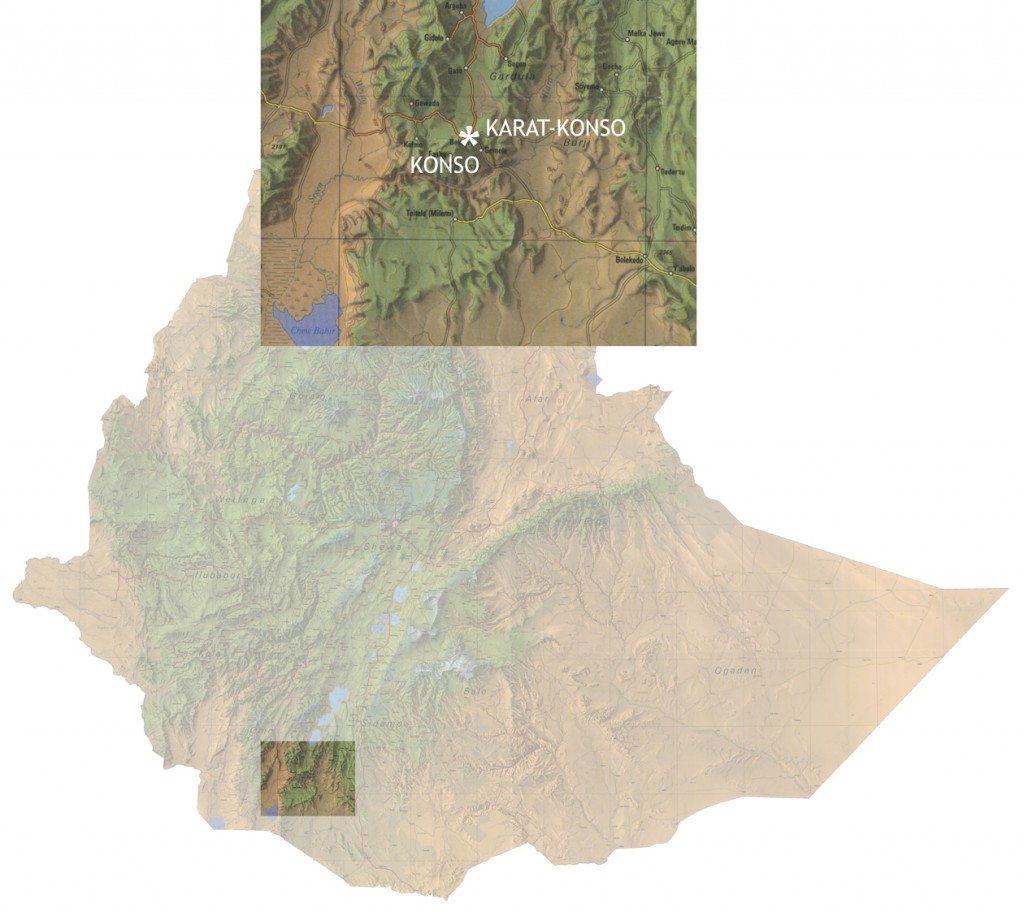South of Arba Minch lies the region of Konso with the capital Karat-Konso. Inhabitants of Konso are traditionally agricultural with some animals raised for food and milk. Their isolated settlements are located on the tops of the hills surrounding Karat-Konso. A very special atmosphere surrounds these picturesque villages, which are built in an unusual style for this part of the country.
Most striking is the defensive nature of the villages. High stone walls surround the settlements and steep paths lead to a few gates which open into the tightly built labyrinth of the village inside. Each single-family residence is also surrounded by a stone wall. Narrow alleyways lead in between the houses and low trees offer shade. The houses themselves are round and built of stone with a thatched roof, complete with an elevated storage building. In the past the villages of Konso were often the targets of looters from the surrounding lowlands. This troubled past is clearly reflected in the building structure and the social behaviour of the residents.
The villages are divided into neighbourhoods which each have one ‘mora’, or community building. Each day this building is used as a meeting place for men and children, where problems are discussed and decisions made. At night, all young men over the age of 12 sleep in the mora. Even some married men spend part of the night here. Should there be any problems in the village, an alarm would sound and defense would quickly be available.
Equally interesting is the social structure in Konso, which is reminiscent to that of the neighbouring Borena lowlands. The male community is divided into generational classes that are crossed with increasing age. Every 18 years the men and boys between eight and 25 years are initiated into the first class. To celebrate the day a ceremony is held where a large generation pole is raised – the number of poles in a village can therefore indicate the age of the settlement.
One unique tradition includes the embalming of clan chiefs for up to nine years and nine months in order to cover up their death. The body is preserved and a disease may be invented in order to explain the permanent absence of the leader. This tradition seems to be in decline, however in the last but one transfer of power in 1990 the leader was said to have a very serious case of the flu. However it was not until seven months later that the deceased leader was buried and his son finally took over.
Another peculiarity of the Konso region surrounds their treatment of the dead. After the death of a respected man and warrior, villagers will decorate his grave with ‘wagas’ – carved wooden figures showing enemies he killed, big game he captured, his wives and the deceased himself. The latter is decorated with animal bones and teeth plus a substantial phallic ornament.
.
..
Surrounding Region: Near the Konso village of Gesergiyo is a rare scenic phenomenon. Sculptured sand formations rise steeply from the ground, created by the seasonal rainfall combined with an otherwise dry ravine. Since the formation resembles skyscrapers due to its vertical structure it was fittingly nicknamed ‘New York’.
Travel Season: Initiation rituals take place in December, January and September. However as this event is only celebrated every 18 years the probability of witnessing one is fairly low. The cycle is different from village to village.
Meals & Accommodation: Some basic hotels can be found in Karat-Konso. A lodge with a better standard can be found nearby, as well as a simple camping ground.
.
.

